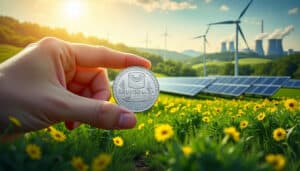Welcome to our innovative platform. Your user experience is at the heart of our concerns. We are committed to protecting your personal data.
Here, we use cookies and data to provide and maintain our services, track outages and protect against spam, fraud, and abuse. We also measure audience engagement and site statistics to understand how our services are used and improve their quality. If you choose “Accept all”, we will also use these tools to develop new services, evaluate the effectiveness of advertisements, and display content and ads tailored to your preferences. To appropriately customize your experience based on your age, we also adjust the content accordingly.

Understanding the Silver Economy and Its Impact
The silver economy refers to the total economic activities generated by older individuals, mainly those over 60 years old. With the aging of the global population, this age group represents an increasingly significant segment of the market. According to projections from the IMF, this demographic shift opens up unprecedented economic prospects, ranging from new consumer markets to innovations in healthcare services and technologies adapted for seniors.
The aging population is a global phenomenon, affecting both developed countries and emerging economies. In Asia, for example, the silver economy of Japan shows how innovation can marry tradition to meet the specific needs of the elderly. Similarly, China anticipates significant growth in this sector, fueled by favorable public policies and increased awareness of the issues related to aging.
This economic segment is not limited to consumer goods. It also includes services such as healthcare, suitable housing, leisure, and digital technologies designed to improve the quality of life for seniors. Thus, the silver economy represents not only an opportunity for growth but also a potential driver for innovation and job creation.
What Are the Key Factors in Population Aging?
Population aging results from several converging factors, primarily the increase in life expectancy and declining birth rates. Thanks to medical advances and better living conditions, individuals are living longer, thus increasing the proportion of older people in society. At the same time, modern lifestyle choices and restrictive family policies contribute to the decrease in birth rates.
These demographic trends have profound implications for the economy. An aging population implies an increased demand for healthcare services, adapted products, and specific infrastructure. Furthermore, it influences labor markets and pension systems, requiring adjustments to maintain economic stability. Companies need to rethink their strategies to adapt to this new reality by innovating and diversifying their offerings.
Another important factor is the evolution of preferences and behaviors among older consumers. Contrary to a stereotypical view, today’s seniors are often active, connected, and eager to remain engaged in society. They seek products and services that meet their specific needs while respecting their desire for autonomy and quality of life.
What Opportunities Does the Silver Economy Offer According to the IMF?
According to the IMF, the silver economy is rife with many underexplored economic opportunities. One of the most promising is the development of technologies adapted for seniors, such as connected health devices, smart homes, and applications that facilitate mobility and communication. These innovations not only meet the needs of older individuals but also open up new markets for technology companies.
The IMF also highlights the growth potential in the healthcare and home care sector. With a growing demand for geriatric care, investments in this area can generate significant returns while contributing to the well-being of the population. Moreover, healthcare infrastructures need to be adapted to accommodate an aging clientele, thereby stimulating the construction and real estate sector.
Another opportunity lies in the potential for reorienting consumer markets. Seniors have substantial purchasing power and seek quality products focused on comfort, safety, and durability. Businesses can capitalize on this demand by offering tailored solutions and investing in research and development to create innovative products.
Finally, the IMF emphasizes the importance of favorable public policies to support the development of the silver economy. Tax incentives, research grants, and tailored training programs can encourage businesses to invest in this sector and fully exploit the opportunities it offers.
Which Sectors Benefit Most from the Silver Economy?
Several sectors particularly benefit from the rise of the silver economy. The healthcare sector tops the list, with increased demand for medical care services, therapies, and pharmaceutical products tailored for older individuals. Companies in the healthcare field are constantly innovating to provide more effective and personalized solutions, thus meeting the requirements of an aging population.
The real estate sector is also impacted, with a growing demand for suitable housing, such as senior residences and smart homes equipped with technologies that facilitate daily life. These infrastructures must not only offer optimal comfort but also ensure safety and accessibility for older users.
The field of information and communication technologies (ICT) is also experiencing expansion thanks to the silver economy. Digital solutions, such as health applications, monitoring devices, and communication platforms, are being developed to ease the lives of seniors and keep them connected with their environment and loved ones.
Moreover, the leisure and travel sector is witnessing a growing demand for offerings tailored to seniors, including cultural activities, organized travels, and wellness programs. Companies need to adapt their services to meet the specific expectations of this clientele by providing enriching and accessible experiences.
How Can Businesses Leverage the Silver Economy?
To take advantage of the silver economy, businesses must adopt an approach centered on the needs and preferences of seniors. This involves a deep understanding of their buying behavior, expectations regarding quality and service, as well as their physical and economic constraints. By relying on this knowledge, companies can develop targeted products and services that precisely meet these needs.
Innovation plays a crucial role in this endeavor. Companies must invest in research and development to create innovative solutions that enhance the quality of life for seniors. This can include advanced health technologies, simplified communication tools, or adapted transportation services. Innovation should be guided by a desire to offer added value, focusing on the practicality, safety, and well-being of users.
Furthermore, companies must strengthen their commitment to social responsibility and inclusivity. By integrating ethical practices and valuing generational diversity, they can create a positive brand image and retain an aging clientele that appreciates socially responsible businesses.
Training and developing internal skills are also essential. By training their staff on the specifics of seniors’ needs, companies can improve their customer service quality and ensure better satisfaction for elderly clients.
Finally, strategic partnerships with specialized stakeholders in the field of the silver economy, such as research centers, health organizations, or senior associations, can offer innovation and expansion perspectives. These collaborations enable resource and expertise sharing to develop more comprehensive and effective solutions.
What Are the Main Challenges of the Silver Economy?
Despite numerous opportunities, the silver economy also presents significant challenges. One of the main obstacles is the financing of healthcare services and related infrastructures. With increasing demand, finding sustainable economic models to fund long-term care, medical equipment, and specialized housing becomes crucial.
Another major challenge is workforce management. The elder care sector requires a qualified and motivated workforce, but faces a shortage of professionals. Companies must invest in training and retaining talent while improving working conditions to attract new collaborators.
The diversity of seniors’ needs also constitutes a complexity. Preferences and requirements vary considerably based on age, health, and socio-economic conditions. Businesses must adopt a personalized and flexible approach to effectively meet this diversity.
Finally, technological barriers and seniors’ adoption of new technologies may hinder the development of innovative solutions. It is essential to design intuitive and accessible technologies, as well as provide adequate support to encourage their use by older individuals.
Examples of Success in the Silver Economy
Several companies have managed to capitalize on the silver economy by developing innovative products and services tailored to the needs of seniors. For example, some tech startups have created connected health devices that allow for remote monitoring of patients’ vital signs, thereby facilitating medical follow-up and reducing hospitalizations.
In the real estate sector, companies have designed modular and smart homes, integrating advanced security systems and home automation technologies to enhance the comfort and autonomy of residents. These initiatives meet a growing demand for suitable and secure housing for older individuals.
Another notable example comes from leisure companies that offer tailored activities for seniors, such as organized trips, wellness courses, or cultural programs. These offerings allow seniors to maintain an active and social life while benefiting from services adapted to their specific needs.
Finally, some insurance companies have developed specific products for seniors, offering coverage adapted to the risks associated with aging and personalized assistance services. These solutions help reassure older individuals and provide them with better financial protection.
These examples illustrate the potential of the silver economy to stimulate innovation and create value while addressing the growing needs of an aging population.
The Future of the Silver Economy: Perspectives and Trends
The future of the silver economy looks promising, with trends shaping its evolution and growth perspectives. One of the main trends is the integration of emerging technologies, such as artificial intelligence, virtual reality, and connected objects, to create solutions even more adapted to the needs of seniors. These technologies allow for personalized services and improve the quality of life for older individuals.
Moreover, the increased awareness of aging issues and the importance of the silver economy are driving governments and businesses to invest more in this sector. Favorable public policies, such as tax incentives and grants for innovative businesses, stimulate the development of new initiatives and strengthen the role of the silver economy in overall economic growth.
Another notable trend is the rise of collaborative business models and intersectoral partnerships. Companies are increasingly collaborating with stakeholders in healthcare, technology, and social services to create integrated ecosystems that holistically meet the needs of seniors. This collaborative approach fosters innovation and creates beneficial synergies for all stakeholders.
Finally, the emphasis on sustainability and social responsibility in developing solutions for the silver economy contributes to a more ethical and inclusive approach. Companies are committed to designing products and services that not only meet the current needs of seniors but also anticipate their future evolutions, thus ensuring continuous adaptation and sustainability of initiatives.
In summary, the silver economy is set to play a central role in the future of the global economy, generating opportunities for growth, innovation, and sustainable development. Companies that are able to anticipate and adapt to these trends will be best positioned to benefit from this rapidly expanding market.
Additional Resources on the Silver Economy
To deepen your understanding of the silver economy and its various dimensions, I recommend consulting the following articles:
- The silver economy: a promising potential for the future
- The silver economy taking flight
- Exploring global expeditions: Fusion of innovation and tradition in Japan’s silver economy
- The silver economy of China: anticipated growth
- How will China innovate to address the challenges of population aging within the framework of the silver economy?










